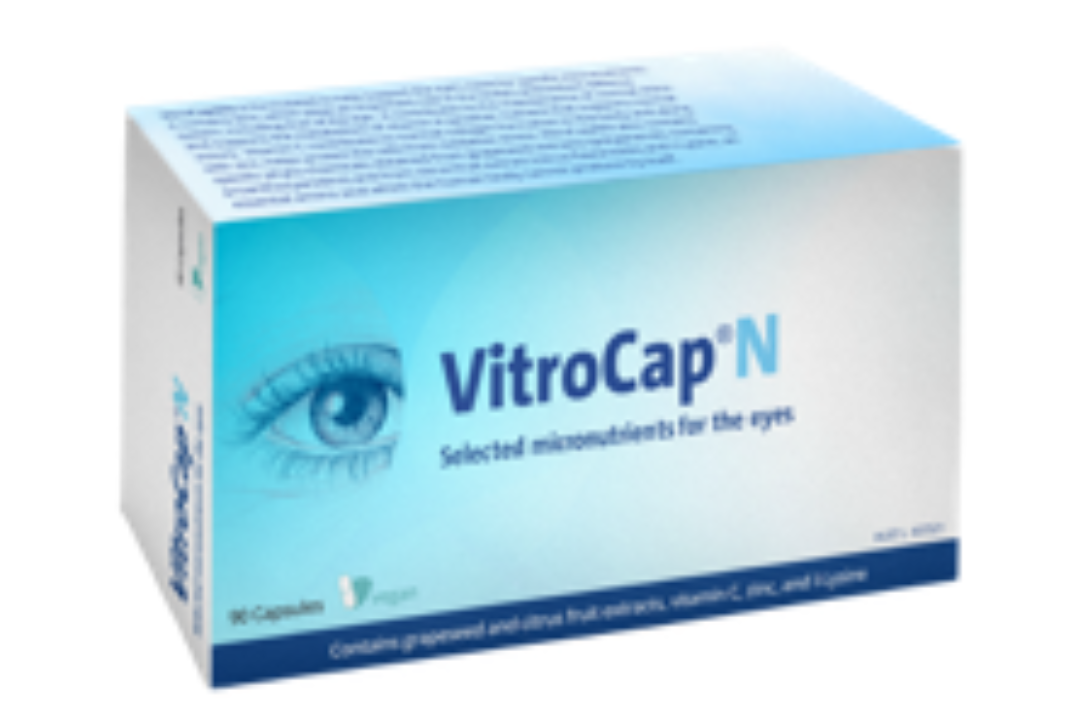VitroCap N is a state-of-the-art micronutrient supplement expertly crafted to bolster and enhance eye health, making it particularly advantageous for those grappling with troublesome vitreous floaters. Extensive clinical studies have thoroughly examined its potential to alleviate the visual discomfort often linked to these floaters, presenting a noteworthy solution for individuals in search of relief.
Explore the Causes and Visual Impacts of Eye Floaters
Eye floaters manifest as small, shadowy shapes that drift across your visual field, becoming particularly noticeable against bright backgrounds. These visual anomalies are a result of alterations in the vitreous humor, the gel-like substance that fills our eyes. As we age, the vitreous humor transitions to a more liquid state, causing clumps of collagen fibers to form, which then cast shadows on the retina. While floaters are generally harmless, they can be quite distracting and may lead to a significant reduction in one’s overall quality of life, adversely affecting daily activities and personal well-being.

Unveiling the Powerful Ingredients of VitroCap N
VitroCap N is an expertly formulated dietary supplement that boasts a distinctive blend of vital micronutrients, including L-lysine, vitamin C, zinc, grape seed extract, and citrus bioflavonoids. Each component has been meticulously chosen for its powerful antioxidant and antiglycation properties, which are essential for maintaining the structural integrity and health of the vitreous body. By fostering the well-being of the vitreous humor, this supplement may assist in diminishing the effects of floaters, ultimately leading to enhanced overall eye health and functionality.
Optimal Usage of VitroCap N: Guidelines for Best Results
VitroCap N is specifically tailored for adults contending with persistent eye floaters. The suggested dosage is one capsule per day, with numerous users reporting noticeable improvements after several months of dedicated use. As with any nutritional supplement, it is prudent to consult an eye care professional before beginning, especially if you have existing eye conditions or are currently taking other medications. This preemptive consultation ensures that the integration of VitroCap N into your health regimen is both safe and beneficial.

Common Inquiries Regarding VitroCap N and Eye Floaters
Q: How long before I notice improvements with VitroCap N?
A: Clinical studies indicate that users can typically expect to see improvements within a six-month period of consistent daily supplementation. This suggests that while results may take some time to manifest, VitroCap N represents a gradual yet effective approach to managing the impact of floaters.
Q: Are there any side effects associated with VitroCap N?
A: Overall, VitroCap N is well-tolerated by the majority of users. However, individuals are encouraged to consult their healthcare provider to ensure that this supplement aligns with their specific health needs and conditions.
Q: Can VitroCap N replace other treatments for floaters?
A: While VitroCap N may aid in alleviating the visual discomfort linked to floaters, it should not be viewed as a replacement for existing medical treatments. Always seek advice from an eye care professional for a comprehensive strategy to maintain your eye health.
Harnessing the Eye Health Benefits Offered by VitroCap N
VitroCap N provides a non-invasive approach to addressing the visual disturbances caused by eye floaters. Supported by clinical research, this supplement may serve as an effective alternative for those in pursuit of relief from this prevalent ocular condition. By incorporating this supplement into your daily routine, you may experience enhanced visual clarity and overall eye comfort, significantly improving your quality of life.
Learn more about VitroCap N at Eyes By Design for further insights and valuable information.
Additional Resources: Citations and References
Wozniak, K., et al. (2015). The Role of Oxidative Stress and Glycation in the Pathogenesis of Vitreous Degeneration. Ophthalmic Research, 54(4), 196–204. https://doi.org/10.1159/000438745
Pinelli, P., et al. (2016). Floaters Reduction Efficacy of a Novel Antioxidant and Anti-Glycation Supplementation (FLIES Study). Journal of Ophthalmology. https://doi.org/10.1155/2016/8234203
Sebag, J. (2008). Anomalous Posterior Vitreous Detachment: A Unifying Concept in Vitreoretinal Disease. Graefe’s Archive for Clinical and Experimental Ophthalmology, 246(3), 329–332. https://doi.org/10.1007/s00417-007-0684-9
VitroCap N Official Product Overview. Vita Research GmbH. https://www.vitrocap.de
Shah, C. P., & Heier, J. S. (2010). YAG Laser Treatment of Vitreous Floaters: Clinical Efficacy and Safety Assessment. Retina, 30(1), 95–102. https://doi.org/10.1097/IAE.0b013e3181ad7bd4
The Floater Intervention Study (FLIES), a randomised, double-blind, placebo-controlled clinical trial, assessed the effects of VitroCap N on individuals experiencing symptomatic vitreous floaters. Over a six-month period, participants utilising VitroCap N reported: Eye Floaters +10 TVST +10 ebiga-vision.com +10
- A significant decrease in areas of vitreous opacity.
- Enhanced contrast sensitivity.
- Improved vision-related quality of life.
These findings suggest that targeted nutritional supplementation may effectively mitigate the visual discomfort associated with floaters.
This article aims to enhance understanding and knowledge concerning general eye health topics.
It is not designed to replace professional medical advice, diagnosis, or treatment.
Always consult a health care professional before incorporating this into your health regimen.
The Article: VitroCap N: Evidence-Based Insights on Reducing Eye Floaters first appeared on https://writebuff.com


The exploration of eye floaters and their impact on vision resonates with many who experience this condition, especially as we age. I’ve often reflected on how little attention is given to the importance of eye health in our broader discussions about wellness. Vitreous floaters, while typically benign, can greatly affect quality of life by drawing attention away from what we want to see, often at the most inconvenient times, such as during work or leisure activities.
You’ve touched on something truly important. Eye health often gets sidelined in broader wellness conversations, which is surprising given how vital our vision is to our everyday lives. Your experience with eye floaters highlights just how disruptive they can be, even if they’re generally harmless. It’s fascinating how something as small as a bit of vitreous humor can wield so much influence over our focus.
“Discover more about managing eye health and improving your daily vision experience in our latest guide.”
https://stilistanar.com/eComToolkit